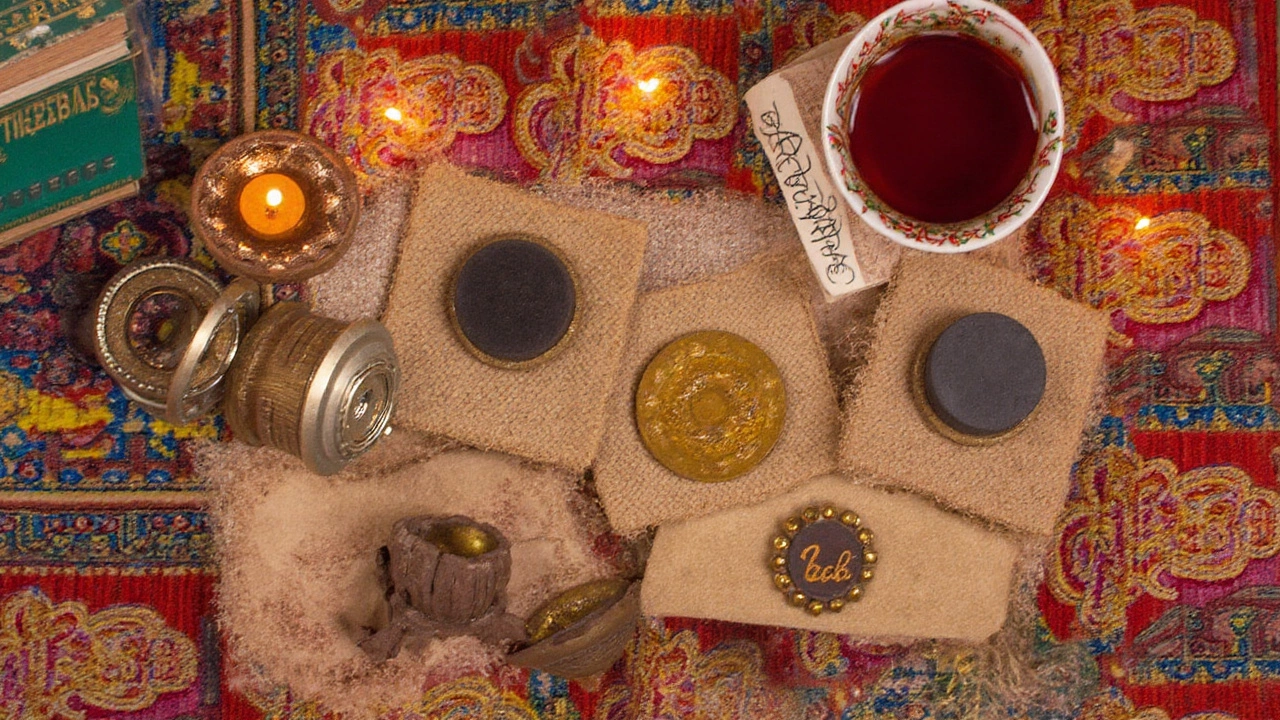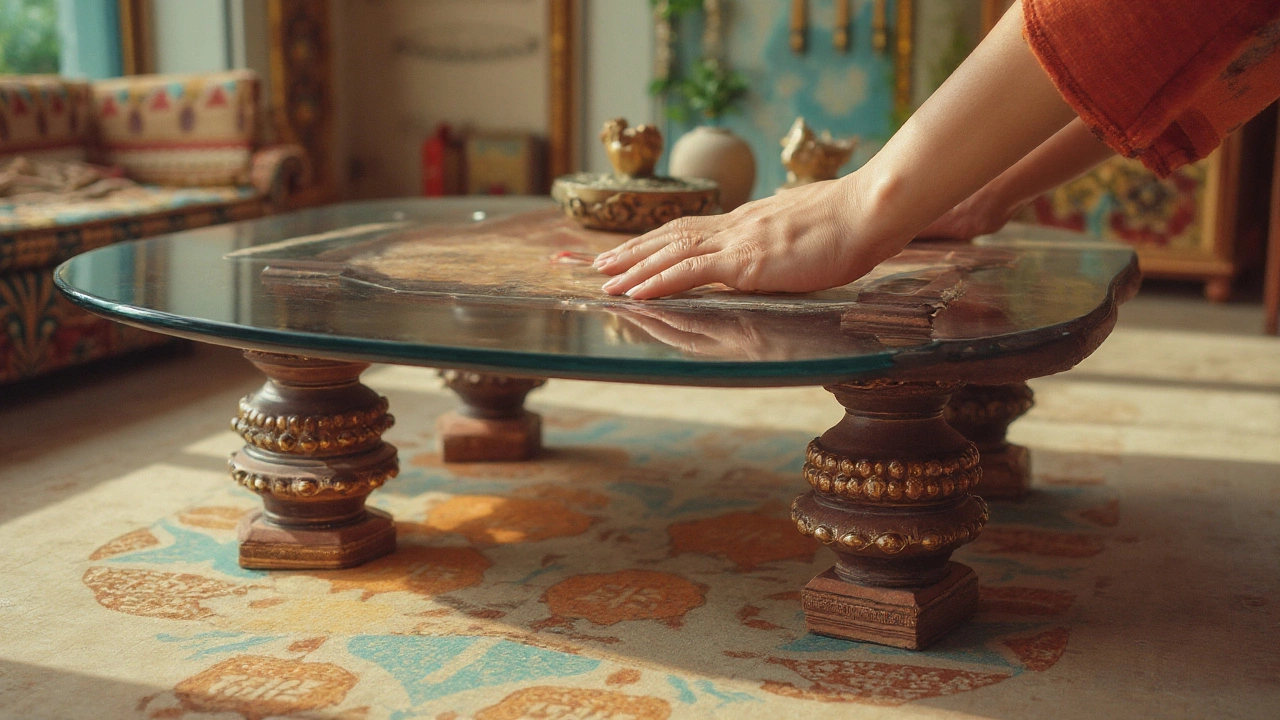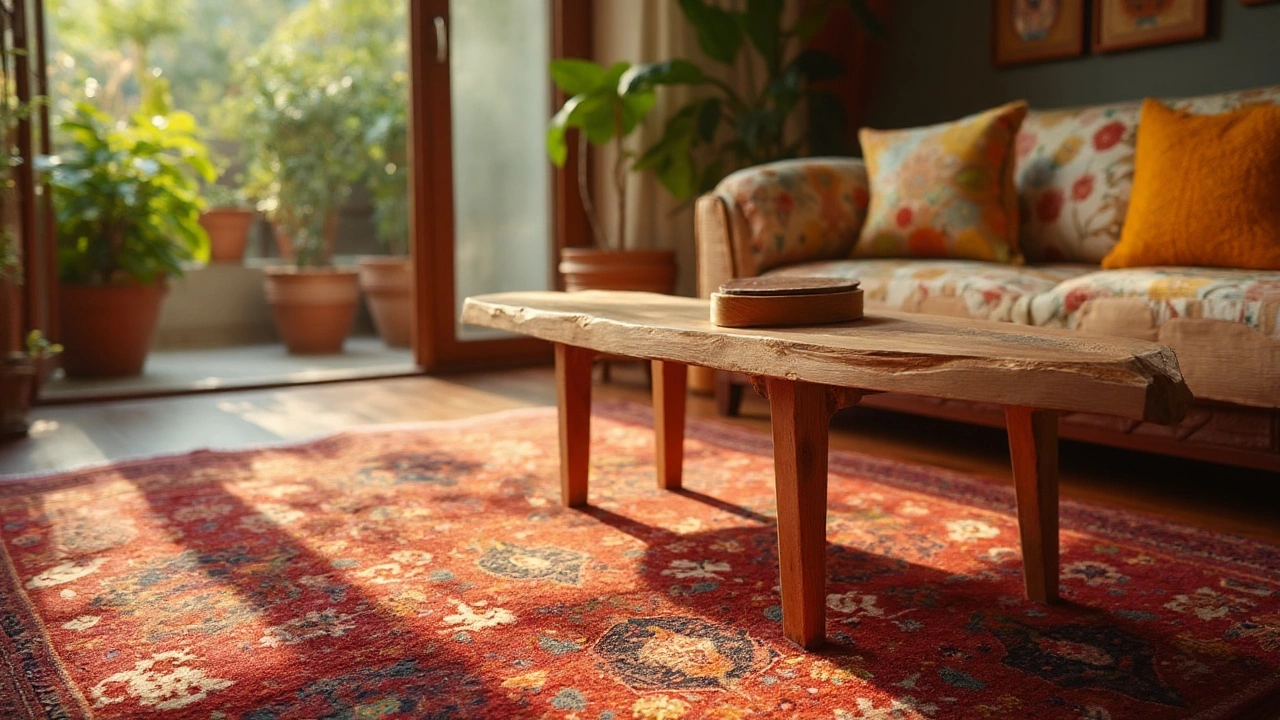Ever noticed how a coffee table seems to pick up every scuff, drag mark, and wobble in the house? It’s not just the top surface that takes abuse. The bottom of your coffee table works hard—even if no one ever sees it. Pick the wrong thing for the underside, and you could end up with wobbly legs, scratched floors, or a piece that just feels off. But get it right, and you’ll not only protect your floors but also give your entire living room a subtle upgrade. Kind of wild how a few simple tweaks on the bottom side can make such a difference. Ready to banish the nerve-jangling scrape of wood on tile or the heartbreak of crushed chair glides? Let’s talk about what really belongs down there, why it matters, and how to do it like a pro.
Why the Bottom of Your Coffee Table Matters More Than You Think
Most folks only care about the tabletop—the spot for remotes, mugs, and probably way too many magazines. But ask any furniture technician, and they'll tell you: the bottom of a coffee table is where the longevity magic happens. The less obvious, not-so-glamorous details down there actually protect your floors, keep your table steady, and sometimes even add style points you never considered. Neglect it, and you're asking for dings, unwanted wobbles, and possibly expensive flooring repairs.
Think about this: every time someone scoots your table—maybe to vacuum, maybe to just stretch out—the bottom comes in direct contact with your floor. Wood scratches on hardwood, metal can score laminate, and heavy tables might actually leave dents in softer surfaces. It's like sliding an unprotected heavy box across a polished car hood. And, if your living room has a rug? Grit gets between the table and the fibers, grinding away and wearing both over time. Suddenly, a table that looked sharp last year is making the whole room feel tired and chewed up.
All this friction isn't just about the floor. Inferior glides or skipped protective pads can torque the table legs, loosen screws, and cause annoying sway. It’s kind of wild how just putting the right stuff underneath solves problems you didn’t even know you had. According to the American Home Furnishings Alliance, over 68% of furniture repairs are traced back to damage caused by improper floor protection or uneven support. So, what do experts recommend? Start from the bottom—literally—and everything else gets easier.
Common Materials for Coffee Table Bottoms: What Works Best?
You’ll find all sorts of materials lining the underside of coffee tables, but not all are created equal. Let’s break it down:
- Felt Pads: The MVP for most homes. Felt glides offer a buffer between the table’s feet and the floor. They're cheap, easy to apply, and cut down noise when you move the table around. The only real downside? They can collect dirt or slip over time if you don't clean them and check their adhesive, but for families with hardwood floors, they're a lifesaver.
- Rubber or Silicone Pads: These guys grip. Rubber pads are best if you’re worried about the table sliding—maybe you’ve got energetic kids or pets who like to launch themselves onto the sofa. Silicone pads are great for both tile and hard floors because they don’t leave marks and are very durable. They’re also more water-resistant than felt, which helps if you live somewhere humid.
- Plastic Glides: Not as gentle as felt, but they do cut down friction and work well for tables mainly staying put. Some plastic glides are shaped to adjust for slight differences in floor height, reducing wobbling on old, uneven boards.
- Metal Feet or Caps: These are sometimes added for a modern look but can be a disaster on hardwood or laminate unless paired with a softer pad underneath. Metal on metal or metal on wood equals scratches. Use with caution.
- Screw-in Levelers: Adjustable feet you twist in or out to keep a table steady on an uneven floor. Genius for old houses or rooms where the flat isn’t so flat. But always combine them with a felt or rubber pad to protect the floor.
Pay attention to what your table and your room actually need. There are no one-size-fits-all fixes. If you’ve got allergies, you probably don’t want felt (it can trap dust and pet hair). Got a fancy Persian rug? Rubber pads are less likely to leave imprints.

Protecting Your Floors and Rugs: Tips and Techniques
Protecting your floors comes down to being proactive, not just reactive. Put the right stuff on the bottom, and you’ll avoid a ton of hassle. Here’s what actually works, based on solid experience and practical advice from flooring specialists.
- First, always clean the underside of your coffee table legs before applying anything new. Dirt and grit trapped under pads gets ground into your floor each time the table moves—super obvious, but easy to forget.
- Felt pads are best for smooth movement but lose effectiveness if you let them wear down; swap them out every few months or sooner if you have heavy traffic or pets.
- If your table sits on a rug, pick a pad material that won’t stick to or mat the rug fibers—rubber or silicone outperforms felt here. Cheap stick-on pads can sometimes leave sticky residue on delicate rugs, so check product reviews first.
- Screw-in glides and levelers are a must if your floor isn’t perfectly flat. Ever had your coffee table rock, even just a bit? That can stress the leg joints over time, which leads to wobbles and cracks.
- For heavy tables or older pieces with rough bases, grab furniture coasters. These are wide, bowl-like cups made of hard rubber or plastic that keep the feet from digging into carpeting or leaving pressure dents in wood flooring. Experts at Architectural Digest suggest using these under tables over 40 pounds.
Just a quick look at some data, real-life style:
| Type of Pad/Protector | Best For | Drawback |
|---|---|---|
| Felt Pad | Hardwood floors, low traffic | Collects dust/hair |
| Rubber/Silicone Pad | Tile/laminate, rugs | May stick to some finishes |
| Plastic Glide | Stationary tables | Can scratch over time |
| Metal Cap | Design/modern look | Must add a soft layer |
| Furniture Coaster | Heavy tables, carpets | Bulky appearance |
Quick tip: If you’re on a budget or in a rush, you can actually cut up an old mouse pad or some thick felt and hot glue it to the bottom. It’s not fancy, but it’ll save your floors until you get the official stuff.
“It sounds basic, but failing to put pads under furniture legs is one of the most common causes of scratches on hardwood floors. It’s such an easy fix, yet so often overlooked.” — Susan Herrington, Flooring Consultant for Renovate Right Magazine
Design Choices: How the Bottom Can Affect Room Style
Here’s the part most people skip: style isn’t just about colors, cushions, or those glossy pages of design magazines. What you put under your coffee table can actually affect the way your room feels. That clunky plastic glide from the hardware store may function fine, but if your table floats on mid-century tapered legs, it clashes. Meanwhile, a visible brass foot cap on a modern table looks cool—if you combine it with a clear, slim disc of silicone. Unexpected design flourishes on the bottom can even become a talking point if your table is slightly raised or on a platform.
Interior designers sometimes customize the feet on tables, swapping out factory issue glides for bronze, brushed nickel, or even hand-carved wooden caps. When you match the foot to the room’s hardware—think lamp bases or mirror frames—it subtly pulls the space together without screaming for attention. It's all detail, but it matters. Experts at Home & Design Trends point out that floating a table on slim, unobtrusive glides keeps even chunkier tables from visually weighing down a room, especially if the floor is light or richly patterned.
If you like that "floating" furniture look, transparent silicone bumpers or clear acrylic feet make the base almost disappear. For boho, cottage, or traditional setups, woven or leather-wrapped pads provide cozy texture you might not expect, all while keeping things from scratching up the floor. Don’t be afraid to mix materials either—an industrial style table can rock a felt pad in charcoal or slate gray, keeping the protection discreet but on theme.
Feeling creative? There are even designer-leg sleeves you can slip over standard coffee table legs to instantly change the mood. Some folks hand-paint simple wooden glides to match wall or trim color. It may sound overkill, but details like this help your room look finished, not just thrown together. And in small living rooms, even little improvements feel huge. Notice how fast a wobbly, scarred-bottomed table can drag down the look, versus one sitting proud on coordinated, tidy feet.
Bottom line: don’t overlook the impact of those subtle finishing touches. The right pad, cap, or glide isn’t just about function—it’s another arrow in your interior design quiver. And if you ever repaint or redecorate, updating these details is quick, cheap, and way less commitment than buying a whole new coffee table anyway.

Real Solutions for Common Coffee Table Challenges
If you stick with felt pads, be ready to swap them out. Heavy tables or lots of movement can flatten felt over time, and worn patches let the furniture leg cut right through, undoing all your good work. Keep a mixed pack of pads in a drawer—you’ll end up using them everywhere.
Rugs with deep pile or fluffy texture often hide table legs, making it easy to skip maintenance. Slide up a corner, check each leg, and look for stuck-on hair or grit. Once a month is usually enough to keep things fresh. If you have a robot vacuum (who doesn’t, these days?) just remember: loose pads or caps are their favorite meal, so secure everything well.
Tables with hollow metal legs sometimes ring or clang on hard floors, which gets old fast. Stick-on silicone sheets (the kind sold for appliance feet) absorb those little shocks and keep things quiet. And for the folks who have tile or stone, those floors can be merciless on wood. Always pick soft, non-marking pads over anything else, and test in a hidden area in case the adhesive reacts with your finish.
More exotic options, like cork or natural rubber, are eco-friendly and available online. Cork, especially, has a vintage look. Some high-end manufacturers use cork pads on every leg, secured by a tiny brass nail, for a look that feels custom and intentional. For high-traffic rooms, check your table for signs of movement every season—creaking, drifting, or black scuffs are all early warnings.
At the end of the day, it pays to think practically: which solution fits your home, your budget, and your taste? One family might need invisible silicone, another might want felt that matches their new grey floors, and yet another is all-in on hardware store coasters. It’s about making your living space more comfortable, longer lasting, and—just maybe—a little more stylish than before.

